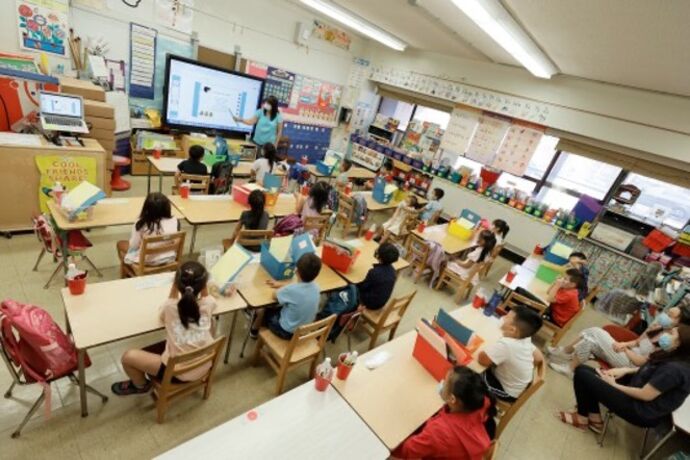NYC Has to Address Dire Math Achievement Crisis

Math achievement in New York City is in a dire state.
As education leaders, we’re deeply concerned. National headlines were made in recent weeks, as PISA scores showed an unprecedented national decline in math scores in the United States. The picture is equally dismal in New York City: last year’s NAEP scores showed that only 18% of the city’s fourth-graders were proficient in math, with even lower proficiency among Black and Hispanic students.
New York City teachers, known for their dedication and hard work, are not at fault. The crux of the problem lies in New York City’s decentralized approach to math instruction, leaving schools and students without essential instructional tools.
Major learning gaps that are fueled by a decentralized curricular approach have spurred action before. In response to the reading and writing crisis, city leadership boldly invested in the new NYC Reads program—a commendable first step towards instructional coherence and supplying schools with high-quality curricula and professional learning.
While NYC Reads is greatly needed, it’s time for city leadership to take similarly bold action on middle school math. The need for high-quality math instruction is equally urgent.
The need for improvement isn’t solely demonstrated by test scores. It’s also a need that’s been cited directly by educators. According to Educators for Excellence’s annual Voices From the Classroom survey, most New York City teachers say they lack quality curricular materials. Furthermore, a RAND study of math educators emphasizes the need for high-quality instructional materials and professional learning in our city’s schools.
As test scores dwindle and educators feel unsupported, our students bear the brunt of these shortcomings. As Teach For America New York heard during a recent listening tour, kids are feeling unprepared for the real world and closed off from opportunities because of it. Math is critical to everyday activities, such as understanding fractions, managing finances, cooking, statistics, and critical thinking. Numeracy is essential to making informed decisions every single day.
Math is also critical for career advancement and global competitiveness. Research shows that proficiency in middle school math is critical for disciplines like science, technology, and engineering and is a springboard to higher math and sciences courses, which contribute to high school graduation rates, college enrollment, and increased earning potential.
In a study timed to coincide with the NAEP release, researchers found that the erosion of math skills experienced by America’s eighth graders may lead to hundreds of billions of dollars in lost earnings over the coming decades. Yet, only 20% of high school graduates are ready for the rigors of STEM majors. Ignoring the gaps in math education further deepens existing inequities and creates barriers to economic mobility.
Just as literacy is a cornerstone of education, so is numeracy. Strengthening these skills will help put students on a path toward greater economic opportunities and agency over their own lives. We urge the city to mirror its efforts to improve literacy by additionally providing high-quality math curricula and professional learning to its educators. Doing so is not just an educational imperative—it is a matter of equity.
Some may argue that we should perfect NYC Reads before tackling middle school math. However, reading and math instruction are not mutually exclusive. Students deserve to get a high-quality education in every subject, not just one at a time. We can’t make the same mistake that we made with literacy and wait another 20 years to fix the problem, especially when the need is so pressing.
Others may have concerns about overburdening schools with simultaneous reading and math overhauls. Yet, that’s precisely why we advocate for starting at the middle school level with math. This would ensure that elementary schools can focus on the new literacy initiative while simultaneously preparing students in mathematics at the middle school level.
While NYC Reads contained an algebra pilot program at the ninth-grade level, high school algebra is too late to intervene when students have already fallen behind. High-quality math curricula at the middle school level, by contrast, would strategically target support for students before difficulties with the subject matter compound.
We recognize that curriculum reforms take time to yield results. Hence, the urgency to act now cannot be overstated. Embracing the discomfort today will be well worth the critical improvements several years from now—when student achievement, teacher surveys, and gaps in proficiency all make demonstrable improvements. We need the city to treat numeracy with the same urgency it treats literacy.
Divanne is the executive director of Educators for Excellence-New York, a teacher-led organization. Morris is the executive director of Teach For America New York, which pursues educational equity.
This article originally appeared in the New York Daily News.


